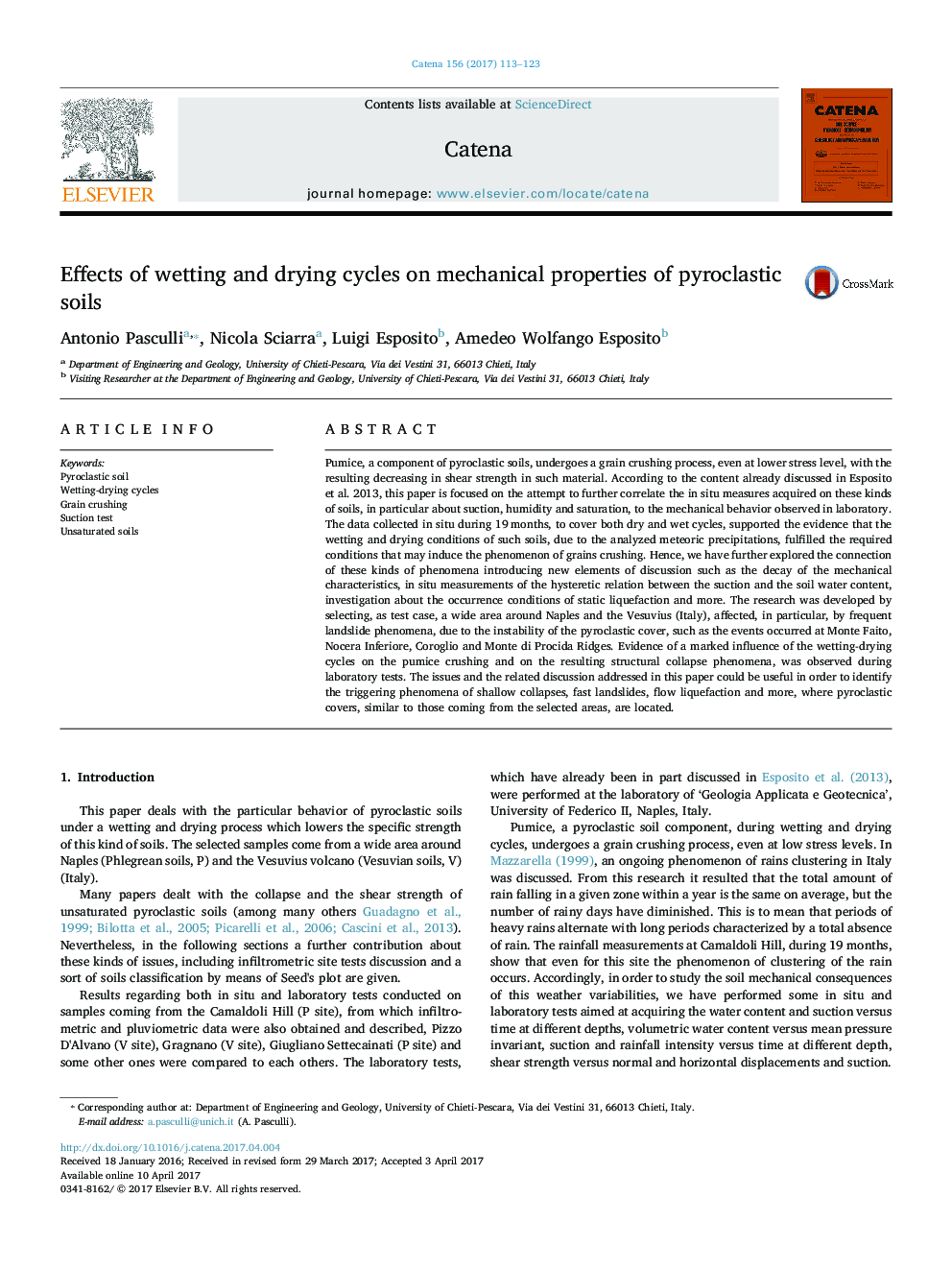| Article ID | Journal | Published Year | Pages | File Type |
|---|---|---|---|---|
| 5769987 | CATENA | 2017 | 11 Pages |
â¢Wetting-drying cycles may induce pyroclastic grains failure and soil collapse.â¢Clear consolidation effect in relation to suction variation due to water immissionâ¢Also flow liquefaction may be one of the causes of instability triggering.â¢Variability of weather may increase wet-dry cycles and soil instability occurrence.â¢Application of Seed's diagram and Vanapalli's equation
Pumice, a component of pyroclastic soils, undergoes a grain crushing process, even at lower stress level, with the resulting decreasing in shear strength in such material. According to the content already discussed in Esposito et al. 2013, this paper is focused on the attempt to further correlate the in situ measures acquired on these kinds of soils, in particular about suction, humidity and saturation, to the mechanical behavior observed in laboratory. The data collected in situ during 19Â months, to cover both dry and wet cycles, supported the evidence that the wetting and drying conditions of such soils, due to the analyzed meteoric precipitations, fulfilled the required conditions that may induce the phenomenon of grains crushing. Hence, we have further explored the connection of these kinds of phenomena introducing new elements of discussion such as the decay of the mechanical characteristics, in situ measurements of the hysteretic relation between the suction and the soil water content, investigation about the occurrence conditions of static liquefaction and more. The research was developed by selecting, as test case, a wide area around Naples and the Vesuvius (Italy), affected, in particular, by frequent landslide phenomena, due to the instability of the pyroclastic cover, such as the events occurred at Monte Faito, Nocera Inferiore, Coroglio and Monte di Procida Ridges. Evidence of a marked influence of the wetting-drying cycles on the pumice crushing and on the resulting structural collapse phenomena, was observed during laboratory tests. The issues and the related discussion addressed in this paper could be useful in order to identify the triggering phenomena of shallow collapses, fast landslides, flow liquefaction and more, where pyroclastic covers, similar to those coming from the selected areas, are located.
